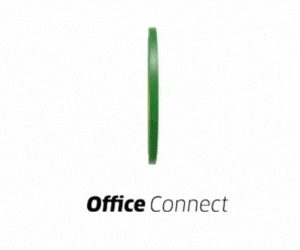In the world of workplace essentials, it’s important to distinguish between stationary and office supplies. While these two categories may seem similar at first glance, they serve distinct purposes and cater to different needs within the office environment. This article will explore the key differences between stationary and office supplies, helping you understand which items fall into each category and how to choose the right products for your workplace needs.
Key Takeaways
- Stationery refers to writing materials and paper goods used for correspondence and record-keeping.
- Office supplies encompass a wider range of items, including organizational tools, productivity aids, and general workspace necessities.
- Understanding the distinction between stationary and office supplies can help you make informed purchasing decisions and optimize your workspace efficiency.
- Stationary is primarily focused on written communication, while office supplies support various administrative and organizational tasks.
- Choosing the right mix of stationary and office supplies can enhance your productivity, organization, and overall workflow in the office.
Introduction to Stationery and Office Supplies
In the world of workplace necessities, office stationery and office supplies play a crucial role in maintaining productivity and organization. While these two categories may seem similar, understanding the distinction between them can significantly impact your purchasing decisions and overall efficiency.
Understanding the Basics
Office stationery typically refers to the materials used for written communication, such as paper goods, writing supplies, and other desk essentials. This includes items like stationery, envelopes, notebooks, pens, and pencils. These writing supplies are essential for tasks like note-taking, correspondence, and record-keeping.
Office supplies, on the other hand, encompass a broader range of workplace necessities that support various administrative and organizational tasks. This includes items like file folders, staplers, highlighters, and even office equipment like printers and scanners. These desk essentials help to streamline workflows and maintain a well-organized workspace.
Why the Distinction Matters
Recognizing the difference between office stationery and office supplies is crucial for effective workplace organization and productivity. By understanding which items fall under each category, you can ensure that your purchasing decisions align with your specific needs and budget. This can help you avoid overspending on unnecessary items and ensure that you have the right desk essentials to support your day-to-day tasks.
Moreover, this distinction can also inform your storage and organization strategies, allowing you to separate and manage these two types of paper goods more efficiently. This can lead to a more organized and clutter-free workspace, ultimately enhancing your overall productivity and workflow.
Stationery: The Essentials for Written Communication
In the digital age, the significance of writing supplies and paper goods remains paramount. Stationery, the backbone of written communication, encompasses a wide range of essential desk essentials and workplace necessities that cater to the needs of professionals and individuals alike.
From the classic notepads and envelopes to the versatile pens and pencils, stationery items serve as the canvas for expressing ideas, jotting down notes, and maintaining a personal touch in our increasingly technological world. These writing supplies are not merely tools but extensions of our thoughts, facilitating clear and effective communication in the workplace and beyond.
Stationery also encompasses a range of specialized paper goods, such as personalized letterheads, greeting cards, and invitations, which elevate the written word to an art form. These items add a touch of elegance and professionalism to our correspondence, fostering genuine connections and leaving a lasting impression on the recipient.
Investing in quality stationery not only enhances productivity but also reflects our attention to detail and commitment to excellence. From the smooth glide of a premium ballpoint pen to the satisfying texture of high-quality paper, the right writing supplies can inspire us to communicate with greater clarity and confidence.
“The pen is mightier than the sword, and the keyboard is mightier than both.”
Whether you’re drafting a formal business letter, jotting down a creative idea, or penning a heartfelt note, stationery remains an indispensable part of our personal and professional lives. By embracing the timeless allure of these desk essentials and workplace necessities, we can elevate the art of written communication and leave a lasting impression in the digital age.
Office Supplies: Tools for Productivity and Organization
In the realm of workplace efficiency, office supplies play a crucial role in helping professionals stay organized and productive. From binders and folders to staplers and paperclips, these essential tools can transform a chaotic workspace into an oasis of order and productivity.
Organizational Tools and Accessories
One of the key benefits of office supplies is their ability to keep workspaces tidy and well-structured. Binders and file folders allow users to neatly store and categorize important documents, while desk organizers and storage containers provide a home for smaller items like pens, paper clips, and sticky notes. These organizational tools not only enhance the visual appeal of a workspace but also streamline workflow, making it easier to locate and retrieve essential materials.
In addition to organizational aids, office supplies offer a range of productivity aids that can help professionals maximize their output. Staplers, hole punchers, and scissors are just a few examples of the tools that can help individuals efficiently compile, secure, and manipulate documents. These workspace materials play a crucial role in supporting the day-to-day tasks that are the backbone of any successful office.
| Organizational Tools | Productivity Aids |
|---|---|
|
|
By investing in a well-stocked collection of office supplies, professionals can create a workspace that supports their organizational and productivity needs, ultimately enhancing their overall efficiency and job satisfaction.
Difference Between Stationary and Office Supplies
Defining the Key Differences
While the terms “stationary” and “office supplies” are often used interchangeably, there are distinct differences between these two categories of workplace necessities. Understanding these distinctions can help you make informed choices when stocking up on the essentials for your office or workspace.
Stationary, by definition, refers to the paper-based materials used for written communication, such as office stationery, writing supplies, and desk essentials. This includes items like letterhead, envelopes, notebooks, and pens. These workplace necessities are primarily focused on facilitating the exchange of written information.
On the other hand, office supplies encompass a broader range of paper goods, office equipment, organizational tools, and workspace materials that support overall productivity and organization in the workplace. This can include items like binders, staplers, file folders, and even technology-based productivity aids.
While there may be some overlapping items, such as writing supplies, the key difference lies in the primary purpose of each category. Stationary is focused on facilitating written communication, while office supplies cater to a wider range of organizational and productivity needs within the workspace.
Paper Products: Stationery vs. Office Supplies
In the world of paper goods, stationery and office supplies often overlap, but there are distinct differences between the two. Stationery typically refers to the essentials for written communication, such as letter paper, envelopes, and greeting cards. On the other hand, office supplies encompass a broader range of paper products designed to enhance productivity and organization in the workplace.
When it comes to paper goods, the key distinction lies in the intended use. Stationery is usually associated with personal correspondence, while office stationery and writing supplies are more closely tied to professional and administrative tasks. However, the lines can blur, as some desk essentials and workplace necessities may serve both personal and professional purposes.
Types of Paper Products
- Stationery: letterhead, envelopes, notepads, greeting cards, and personal writing paper
- Office supplies: printer paper, copy paper, file folders, binder clips, and labels
Choosing the right paper products for your needs can make a significant difference in the efficiency and professionalism of your work. Whether you’re crafting a heartfelt letter or organizing your office, selecting the appropriate stationery or office supplies can streamline your tasks and enhance your overall productivity.
Writing Instruments: Pens, Pencils, and More
In the world of writing supplies, pens and pencils reign supreme as the go-to desk essentials for everyday written communication. Whether you’re jotting down notes, drafting a report, or signing important documents, the right writing instrument can make all the difference in your workplace necessities.
Exploring Various Writing Tools
Pens come in a variety of styles, from the classic ballpoint to the sleek and sophisticated rollerball. Ballpoint pens are known for their reliability and smooth ink flow, making them a popular choice for everyday note-taking. Rollerball pens, on the other hand, offer a more fluid and effortless writing experience, often favored by those who prefer a more natural feel.
Pencils, too, have their own unique advantages. Mechanical pencils provide a consistent lead supply, while traditional wooden pencils offer a more nostalgic and tactile writing experience. For those who enjoy the versatility of both, erasable pens combine the best of both worlds, allowing you to easily correct any mistakes.
Beyond the standard pens and pencils, the world of writing supplies also includes specialized tools like highlighters, markers, and calligraphy pens. These accessories can enhance productivity and creativity, whether you’re color-coding your notes or experimenting with artistic lettering.
When it comes to desk essentials and workplace necessities, the right writing instrument can make all the difference in your day-to-day tasks. Exploring the diverse range of pens, pencils, and other writing tools can help you find the perfect fit for your personal preferences and professional needs.
Desktop Organizers and Storage Solutions
Keeping your workspace tidy and organized can have a significant impact on your productivity. That’s where desktop organizers and storage solutions come into play. These organizational tools can help you streamline your workspace materials and boost your overall productivity aids.
One versatile option for desktop organization is the humble desk tray. These trays offer designated compartments for storing essential items like pens, paperclips, and sticky notes, ensuring they’re always within reach. Additionally, stackable trays can maximize your limited desk space, allowing you to neatly arrange and access your workspace materials.
- Desk trays with multiple compartments
- Stackable trays for efficient use of space
- Magnetic organizers to keep small items in place
Another popular organizational tool is the desk drawer organizer. These modular systems enable you to customize your drawers, creating designated spaces for different supplies and workspace materials. By compartmentalizing your drawers, you can easily find what you need, reducing the time spent searching and promoting a sense of order in your workspace.
- Adjustable drawer dividers for customizable storage
- Specialized organizers for pens, paperclips, and other small items
- Vertical storage solutions for file folders and documents
Investing in these organizational tools and productivity aids can transform your desktop into a well-organized, efficient workspace, empowering you to focus on the tasks at hand and achieve your goals with greater ease.
Specialty Items: Stationery vs. Office Supplies
When it comes to the world of office stationery and workplace necessities, there are a variety of specialized items that can be categorized as either stationery or office supplies. Understanding the unique characteristics and applications of these specialized products can help you make informed decisions about your desk essentials and organizational tools.
Unique Items in Each Category
Stationery often encompasses more personal and expressive items, such as:
- Personalized note cards and envelopes
- Decorative washi tapes and stickers
- Luxury fountain pens and calligraphy sets
- Custom-made sealing wax and stampers
On the other hand, office supplies may include more practical and functional workspace materials and productivity aids, such as:
- Specialty labels and file folders for organization
- Ergonomic document holders and clip boards
- Specialized desktop staplers and hole punchers
- Unique desk accessories like pen holders and paper clips
The distinction between these specialty items often lies in their purpose and intended use. Stationery leans more towards personal expression and written communication, while office supplies focus on enhancing productivity and streamlining workplace necessities.
| Specialty Stationery Items | Specialty Office Supply Items |
|---|---|
| Personalized note cards and envelopes | Specialty labels and file folders |
| Decorative washi tapes and stickers | Ergonomic document holders and clipboards |
| Luxury fountain pens and calligraphy sets | Specialized desktop staplers and hole punchers |
| Custom-made sealing wax and stampers | Unique desk accessories like pen holders and paper clips |
By understanding the nuances between specialty stationery and office supplies, you can better curate your writing supplies and organizational tools to suit your unique workspace materials and productivity needs.
Office Equipment: Printers, Scanners, and Fax Machines
In the realm of office equipment, printers, scanners, and fax machines play a vital role in supporting workplace productivity and organization. These workspace materials have become essential tools for streamlining daily tasks and enhancing the efficiency of any modern office.
Printers, for instance, allow users to transform digital documents into physical form, enabling the creation of hard copies for record-keeping, collaboration, or distribution. From sleek, compact models to high-volume, multifunction devices, printers cater to a wide range of office equipment needs, catering to both individual and team requirements.
Scanners, on the other hand, serve as the digital gatekeepers, converting physical documents into electronic files. These productivity aids play a crucial role in digitizing important records, facilitating the seamless exchange of information, and reducing the reliance on physical storage space.
Fax machines, although less prevalent in today’s digital landscape, still hold a place in many offices. These specialized office equipment units enable the secure transmission of confidential documents across distances, making them invaluable for specific industries or regulatory compliance requirements.
Collectively, these office equipment solutions empower employees to streamline workflows, collaborate more effectively, and maintain organized workspace materials, ultimately contributing to the overall productivity and efficiency of the workplace.
Eco-Friendly Options for Stationery and Office Supplies
In the ever-growing movement towards sustainability, the world of office stationery and writing supplies is no exception. Consumers are increasingly seeking out paper goods, office equipment, and other organizational tools that are not only functional but also environmentally friendly.
One of the key considerations when it comes to eco-friendly workspace materials and productivity aids is the use of recycled or renewable materials. Notebooks, envelopes, and other stationery items made from recycled paper are becoming more prevalent, reducing the demand for virgin materials and diverting waste from landfills.
- Recycled paper products: Notebooks, envelopes, and other stationery items made from recycled paper
- Bamboo and plant-based materials: Sustainable alternatives to traditional plastics and wood-based products
- Refillable pens and pencils: Reducing waste from disposable writing instruments
Another area of focus is the use of sustainable materials in the production of office supplies. Bamboo and other plant-based materials are gaining traction as alternatives to traditional plastics and wood-based products, offering a more eco-friendly solution for desk organizers, storage solutions, and other organizational tools.
As consumers become more conscious of their environmental impact, the demand for eco-friendly stationery and office supplies continues to grow. By making informed choices and supporting businesses that prioritize sustainability, individuals can contribute to a greener future for the office and beyond.
Cost Considerations: Stationery vs. Office Supplies
When it comes to outfitting your office or workspace, the cost of office stationery and office supplies can be a significant consideration. The right balance between quality, quantity, and budget is essential for maintaining productivity and keeping your workplace organized.
One key factor that can influence the pricing of writing supplies and desk essentials is the quality of the materials. Premium brand-name products may come with a higher price tag, but they often offer superior durability and performance. On the other hand, opting for more affordable, generic options can help stretch your workplace necessities budget.
The quantity you purchase can also impact the overall cost. Buying in bulk for commonly used paper goods and office equipment can help you save money in the long run, while smaller, individual purchases may result in higher per-unit prices.
| Item | Average Price Range |
|---|---|
| Pens (pack of 12) | – |
| Notebooks (pack of 3) | – |
| Printer Paper (500 sheets) | – |
| Desk Organizers | – |
When planning your office stationery and organizational tools budget, it’s essential to consider the long-term productivity aids and workspace materials needs of your office. By making strategic choices, you can ensure that your desk essentials meet your requirements without overspending.
Conclusion
As we’ve explored, the distinct worlds of stationery and office supplies each serve vital roles in the modern workplace. Stationery, the essential tools for written communication, encompass the paper goods, pens, and specialty items that facilitate professional correspondence and personal expression. On the other hand, office supplies encompass the organizational accessories, desk essentials, and productivity-enhancing equipment that streamline workflows and foster a well-structured workspace.
To effectively navigate the realm of workplace materials, it’s crucial to understand the nuanced differences between these two categories. Whether you’re stocking up on office stationery, replenishing your writing supplies, or seeking out the perfect desk essentials and organizational tools, making informed choices can significantly enhance your productivity and support your workplace necessities. By aligning your purchasing decisions with your specific workspace materials and paper goods requirements, you can create a harmonious and efficient office environment.
In the end, the distinction between stationery and office supplies serves as a valuable framework for understanding the diverse range of tools and equipment that cater to the evolving needs of modern workplaces and professional settings. By embracing this understanding, you can make strategic investments in the right office supplies and stationery to elevate your productivity aids and optimize your difference between stationary and office supplies.






